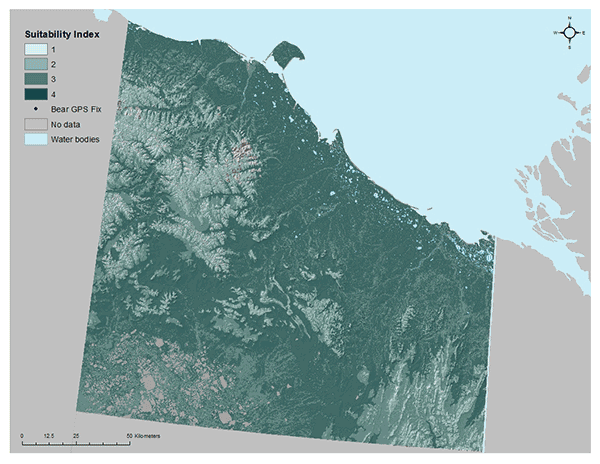Results
Bear Activity and Migration Corridors
The kernel densities of females and males show that females tend to stay within a more localized habitat area while the males occupy a larger amount of space, albeit at a lower density. The resulting corridors also reflect these findings as there were more corridors for males than there were for females. Overall, the bears appear to stay within a preferred home range.
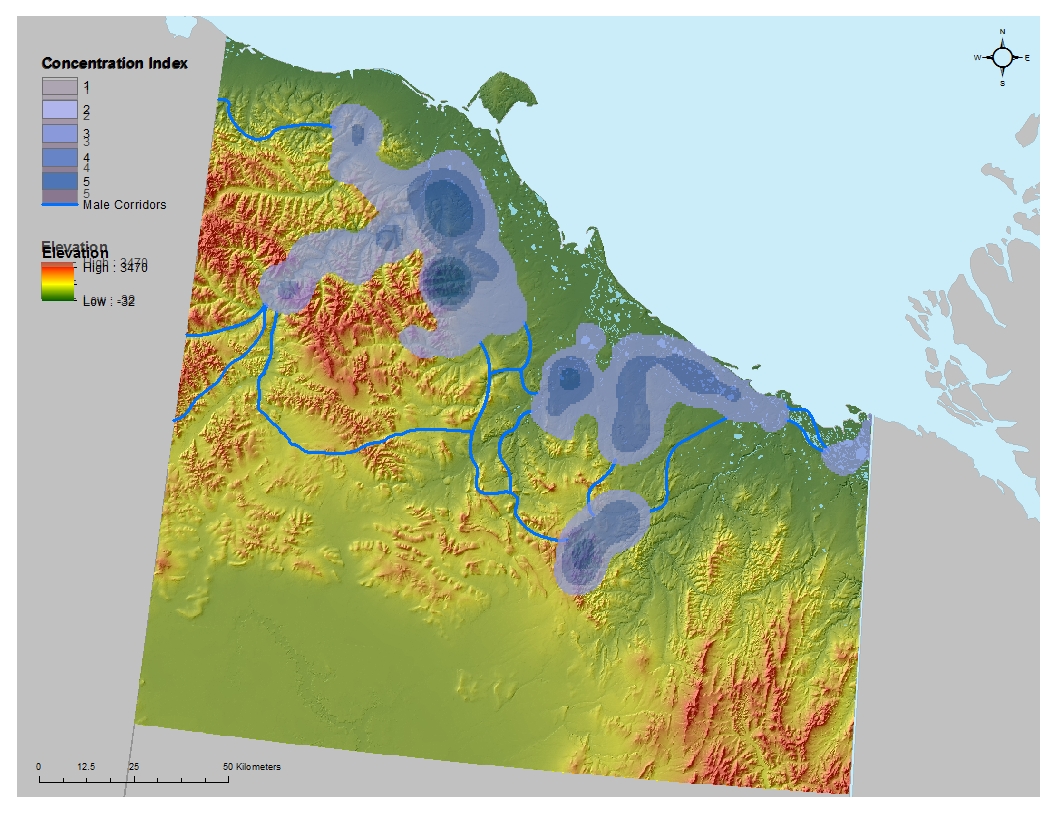
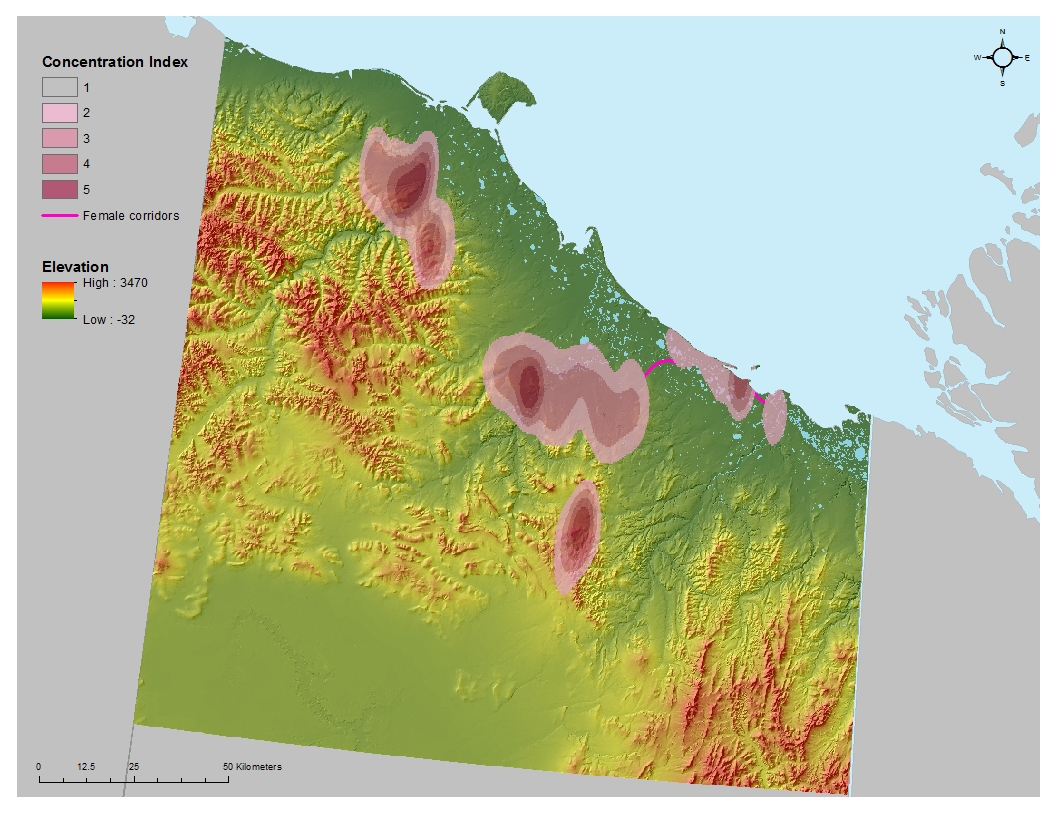
Habitat Suitability Assessments
Histograms indicated some correlation between landscape features and bear movement. The frequency of bear movement decreased with increasing slope, with no recorded movement up a slope greater than 50%. Elevation affected female and males differently. Males bears preferred elevations at 500 meters above sea level while females were less choosy about the elevations. Females preferred 200, 300, 500, and 700 meters above sea level. Males and females tended to prefer the same land cover type with wetland being most favourable. Shrubland and exposed land were also preferred but to a lesser extent. These results are reflected in the Multiple Criteria Evaluation.
Multi-Criteria Evaluation Results
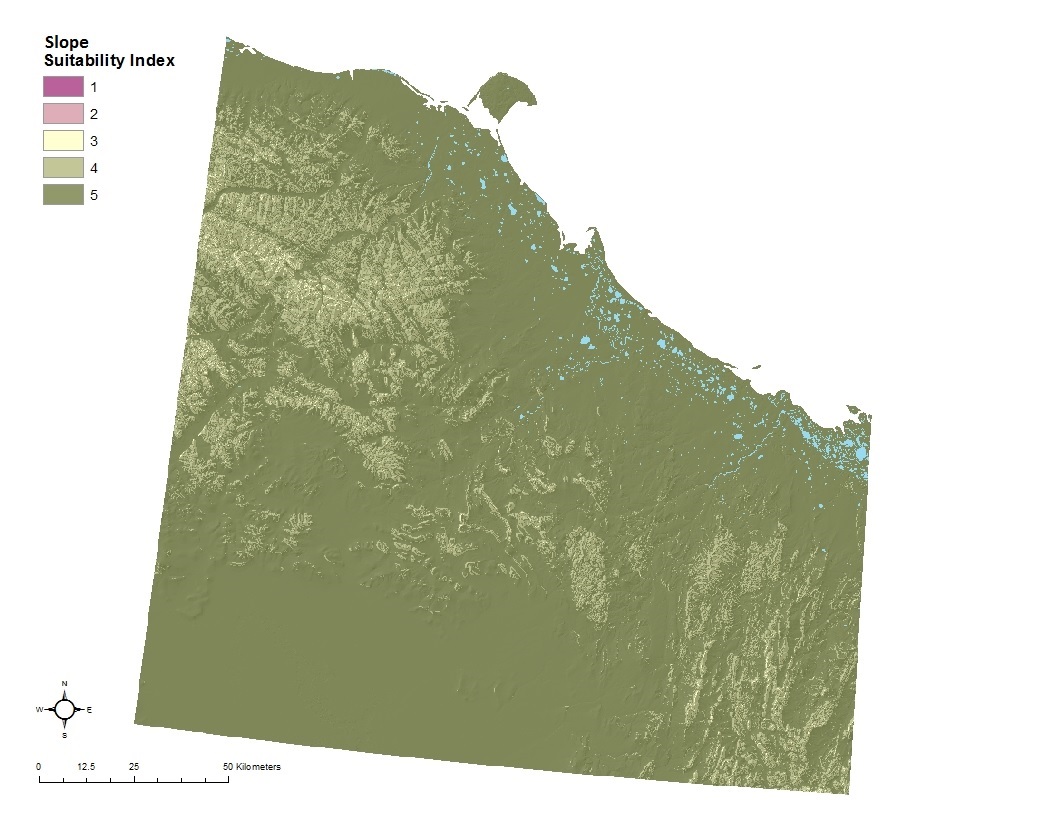
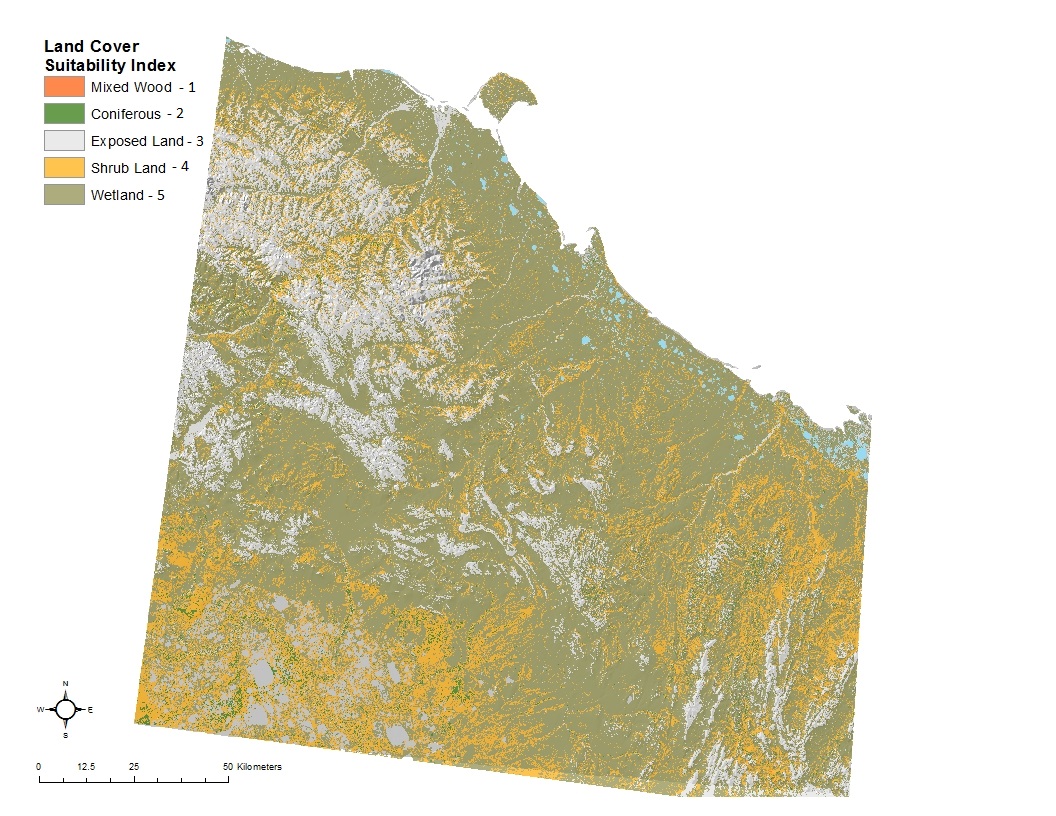
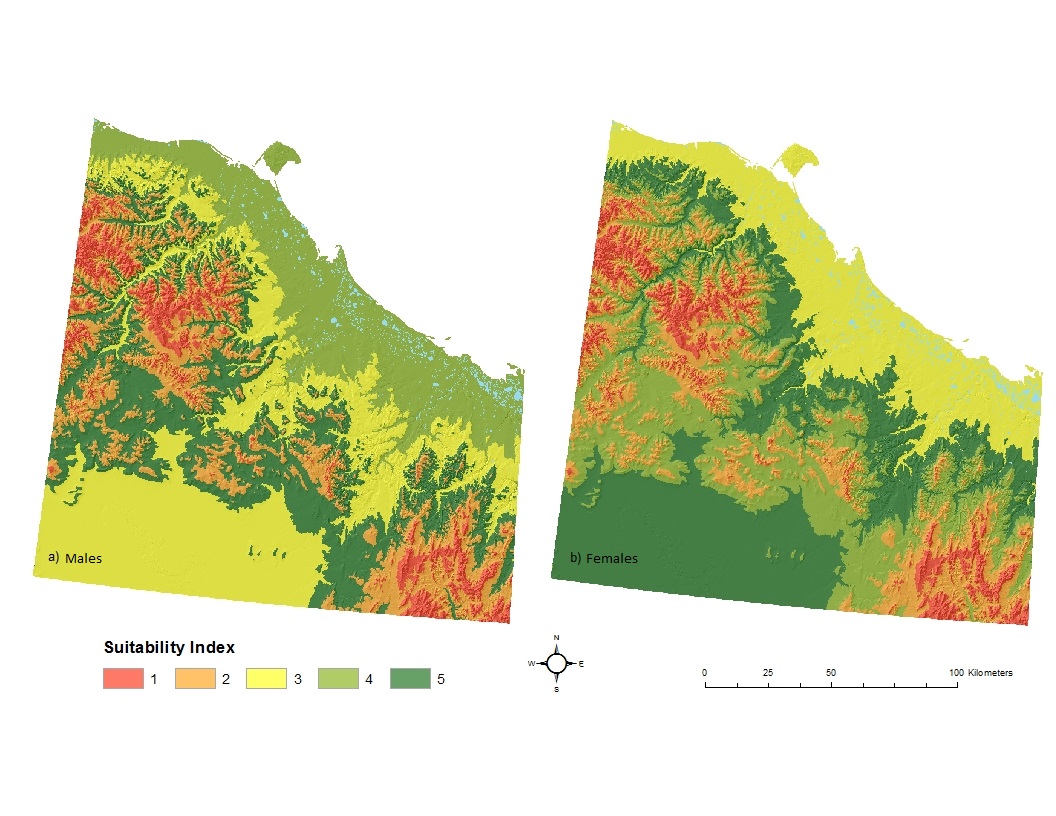
The above maps display the suitability results for slope, vegetation and elevation. Below is the habitat suitability map created using the Multiple-Criteria Evaluation. Rankings are from least suitable (1) to most suitable (4). These results also strongly correlate to spaces already occupied by bears in the region, as shown by all fix points collected throughout the duration of the study.
| ‹ | › |
